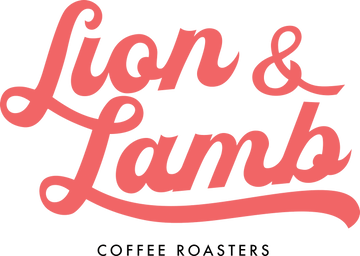How to use a French Press
Bonjour! That’s “hello” in French! Why am I speaking French you ask? Well we are talking about the French Press usage after all! If you are looking for a great "How to use a French Press guide", look no further! Although officially patented by an Italian in 1929, its origin has been linked to the previous century in France. So what is it about the French Press that is so appealing to coffee drinkers? It certainly does have a luxurious and sexy nature to it that you do not get with any other coffee brewer, but what makes it truly special is its ease of use while maintaining a sense of sophistication. Wait a minute you’re thinking, I thought French Press was just throw some coffee in, heat some water, stir it up. PLUNGE. You got coffee. The end...why do we need a guide?! Well that is basically it, but come on, you can say that about anything. Get some meat, throw it on the grill, flip it. You got burgers...not quite. While French Press instructions really are that simple, there are so many things you can do to it that can customize your cup of coffee just how you like it. French Press usage is so simple, yet can make you coffee that is worlds apart, just with a few simple adjustments.
The Method
The French Press is a “Total Immersion” brewer meaning that the coffee is always submerged in water. This type of brew method, say vs a pour over coffee, results in a cup of coffee that has more body (think of orange juice with and without pulp). A lot of coffee drinkers love coffee with a lot of body, and typically darker roasted coffees are chosen for this method as to accent their dark roast flavor characteristics of chocolate, nuts, and woody notes. If you are a dark roast lover, or someone who likes body in their coffee, this brewing method is for you! That does not mean however that you cannot use a lighter roasted coffee with a French Press, not at all!
The Filter
French Press usage is also unique because it doesn’t have a conventional filter. The plunger acts as its filter, and although it does have a kind of micro-metal flesh, it does not trap as many fine particles as say a regular coffee pot with a paper filter. Without a filter for the coffee to pass through, the resulting coffee may seem “stronger” or “bolder” as some like to describe it. This is due to the fact that there are in fact more coffee particles floating around in your cup that did not get filtered out. Some people really love that, and others don't! Play around with different brew methods to see if you like coffee that is more full bodied (French Press) or coffee that has less body (Pour Over).
The Grind
Grind size is incredibly important with all brew methods, but there is a common misconception when talking about how to use the French Press that really only people the coffee industry know. I am prepared to share that information with you, so now you owe me one! The thing about French Press is that most people think you should be grinding very coarse, and while you can grind very coarse, it isn't the best way in my opinion to make a French Press. If you like a cup of coffee that is extremely “bold” and “strong” then yes I would say grind coarser, and use more coffee in your recipe, that is the “traditional” French Press coffee way. However, to be honest I believe in fact that a medium grind setting for a French Press recipe is much more appealing because it still maintains the body that comes with a French Press, but delivers more sweetness and balance. We will be providing 2 recipes below, one traditional and one modern, and I urge you to compare both!
A very coarse grind
A medium grind
To do or not to do
So as we mentioned at the beginning of this article, there are a lot of subtle things you can do in your French Press recipe that will change its overall cup profile.
1) Stirring
2) Plunging
3) Skimming
4) Timing
Stirring
Stirring is not anything new in the coffee world, but it can make a big difference in your coffee and most people don't know anything about it! The basic premise is simple in that stirring creates agitation during the brewing process, more agitation means the coffee will be extracted more. In our opinion, stirring in a French Press should be done at the beginning to ensure that the coffee grounds have been saturated, and once at the end to force the coffee to separate from the surface and fall to the bottom of the press. Anything in between would just cause the coffee to become over extracted and “muddy”.
You can see here the coffee floating on the surface which needs to be stirred in
Plunging
Let’s be honest, pushing that little handle down to plunge the coffee is incredibly satisfying. It’s purpose is obvious, push the coffee grounds down so that they don’t end up in your coffee cup. Without the plunge however, the coffee will still be filtered by that sort of mesh screen, even if you leave sitting at the top un-plunged. All plunging is really doing is actually disturbing the the coffee, sloshing it around and mixing those tiny particles that have settled on the bottom with the rest of the brew. Leaving the coffee undisturbed will actually produce a cleaner feeling coffee, but still maintaining the body and sweetness French Pressers love. I’m not saying to ban the plunge, in just saying it’s worth looking into if you are in pursuit of the best cup possible. We will go over two recipes at the end of this article!
Skimming
When coffee is brewed it will release some CO2 gas that is stored in the bean from the roasting process. This is perfectly natural, and in some ways can be an indicator for the freshness of a roast. That gas release however created bubbles that trap a concentrated amount of oils and fats in them. Usually these would be strained via a filter, but since the French Press has a very small amount of filtration, removing them ourselves has proven beneficial. We can do this simply by taking two spoons and skimming the surface of the coffee for those tiny bubble patches with lightly colored crema, this should only take a few seconds and can dramatically change your cup profile. Timing Timing is important in any coffee brewing scenario, but with the French Press patience plays an integral role, and it will be rewarded. A 10 minute brew time would be ideal, and the reason for that is because we want those tiny coffee particles to settle down into the coffee bed, and not into our cup.


I love coffee especially in the morning. However, it bothers my stomach. Any suggestions?
Leave a comment